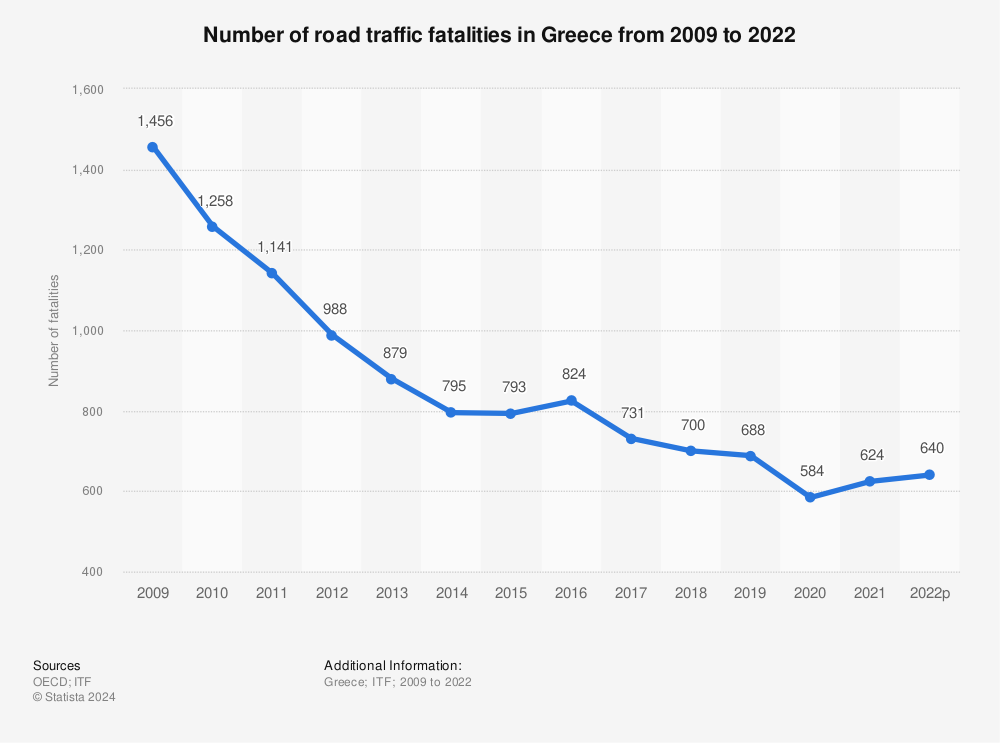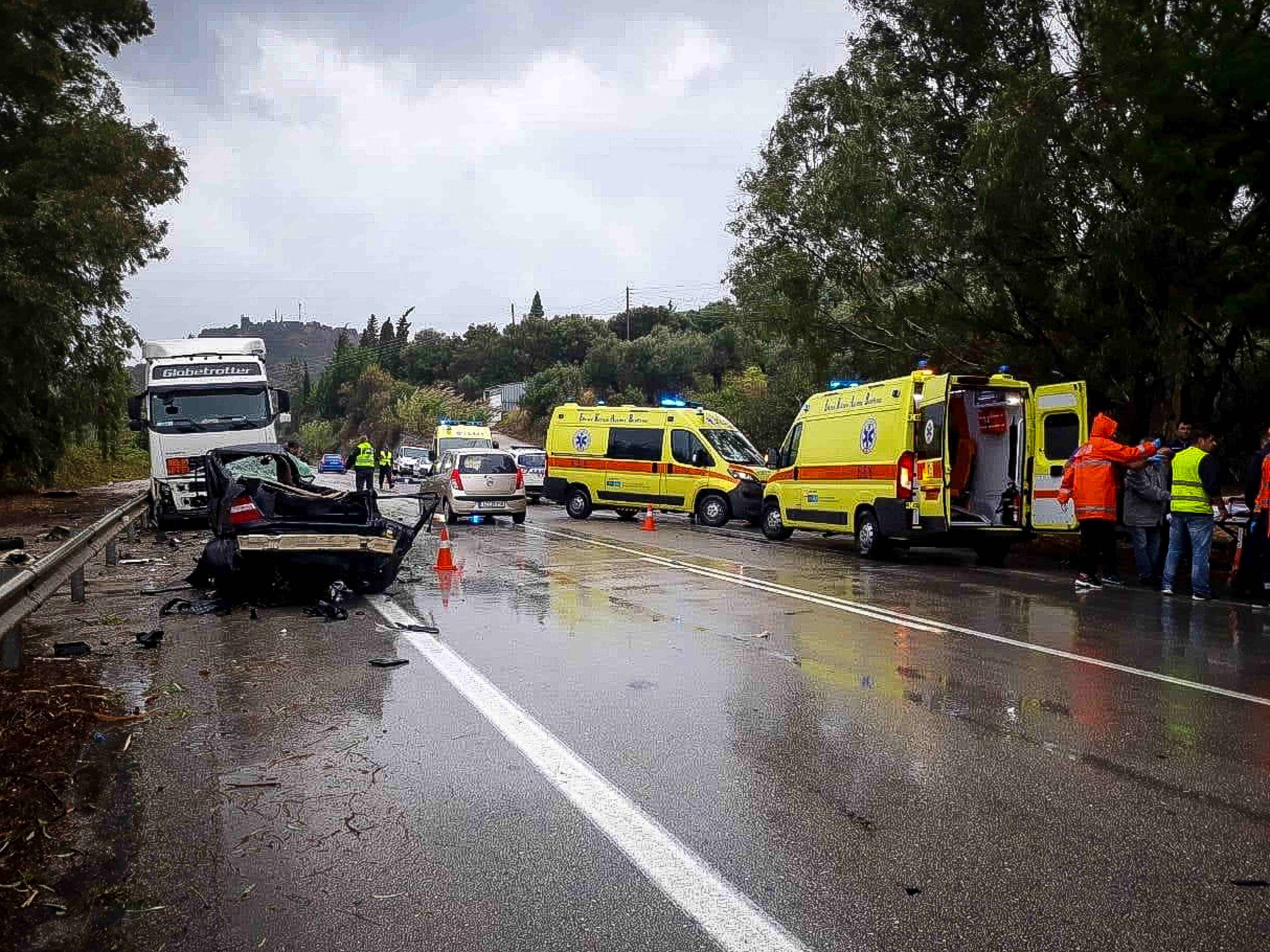Greece posted 518 deaths and 548 serious injuries from car accidents in the first 10 months of 2023, and another 95 accidents have occurred in just the first few days of the holidays, which have led to an additional 10 deaths on Greek roads.
Over the past few days, Greek media has been dominated by images of deadly car accidents, which led Ta Nea to characterize Greek roads as having been “painted red with blood” over the holidays. The public was particularly shocked by a story of two youth, ages 18 and 17, that tragically lost their lives in a car accident on Christmas Eve in the northern Athens suburb of Vrilissia.
And this morning another video has arisen showing a pedestrian walking down the sidewalk in the north-central area of Agioi Anargyroi being struck by a vehicle that then crashed into a store front. Media reports state that the driver was speeding and has sustained injuries, while the pedestrian is in critical condition in the intensive care unit of a hospital where doctors are fighting to save his legs.
Greece has a reputation for recording some of the highest levels of road fatalities across the European Union and ranked 6th in terms of deaths per millions of inhabitants in 2021. That being said, it has marked a significant reduction in annual fatalities with deaths falling from 1,456 to 640 persons from 2009 to 2022, according to data at Statista.

Find more statistics at Statista
The steady decrease can be attributed to a number of factors, including a significant overall improvement in the condition of roads in the country and improved education and enforcement. However, since 2020, it seems that road fatalities in Greece are nudging higher, which is also a generally observed trend across Europe.
Greek authorities have stressed their concern about the increase in road accidents, particularly over the holidays, and have revealed that the main factors contributing to the increase in accidents over the past few days are alcohol, drugs, speeding and generally reckless driving.
As a result, Greek police will continue to conduct alcohol tests and detailed that from 23 to 25 December they conducted 14,298 random alcohol tests of drivers across the country and found that 380 of the drivers had blood alcohol levels above the legal limits.
Nikos Rigas, the Vice President of a police union told press that police are witnessing tragedies every day on the streets and stressed that children must learn appropriate driving behaviors from a young age.
In line with Rigas’ statement about the importance of exercising caution while driving and his focus on the need to properly educate youth, the World Health Organization (WHO) reports that fatal car accidents are the number one cause of death for children and young adults between the ages 5-29.
There is also a connection between income and vulnerability levels, according to the WHO, which highlights that of the 1.19 million people who die every year in road accidents, more than half are ‘vulnerable’ road users, pedestrians, cyclists and motorcyclists. And men are 3 times more likely than women to die in motor accidents.
As 92% of the world’s traffic fatalities happen in low- and middle-income countries, despite the fact that they have only 60% of the world’s vehicles, the WHO considers road safety a key development issue and has therefore declared a “Decade of Action for Road Safety” up until 2030.
The EU continues to make road safety a top priority as well and aims to reduce the 20,000 lives lost annually in fatalities. Along these lines, on December 8 it voted to tighten regulations related to the award of driving licenses across the bloc and to better educate and train drivers in the EU to account for the increased presence of scooters and cycles on Europe’s roads.




